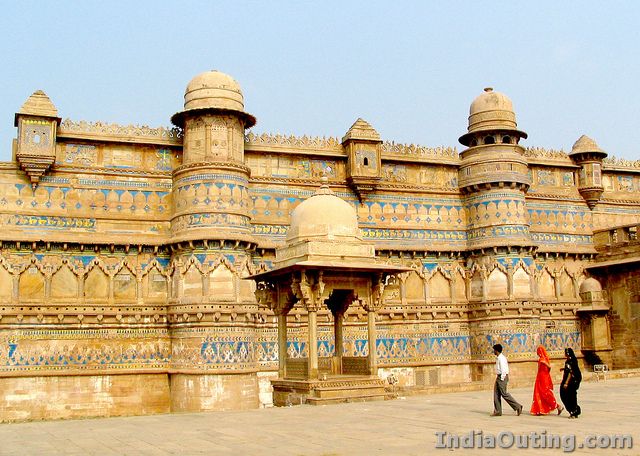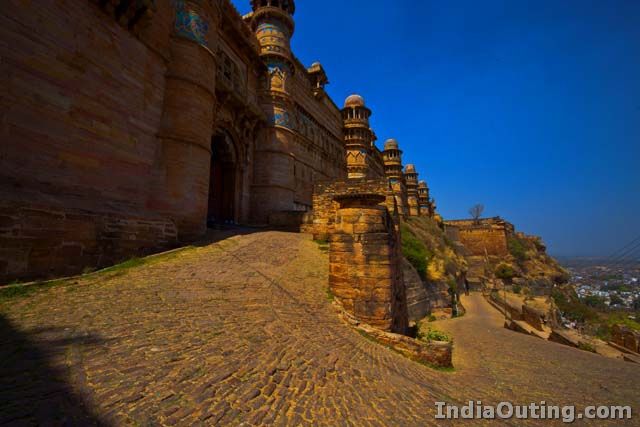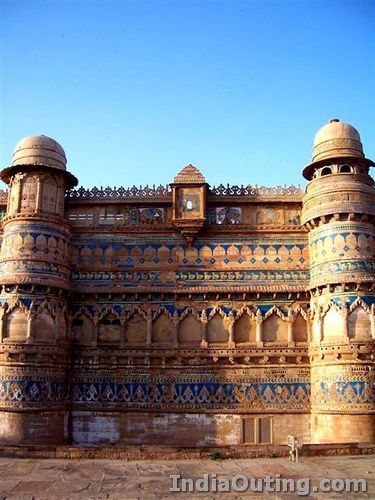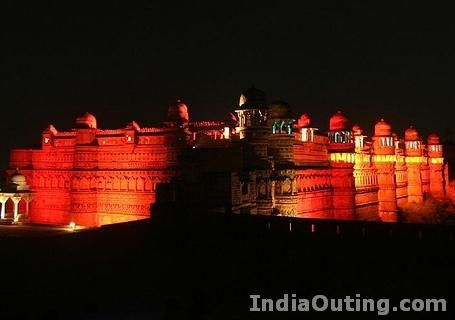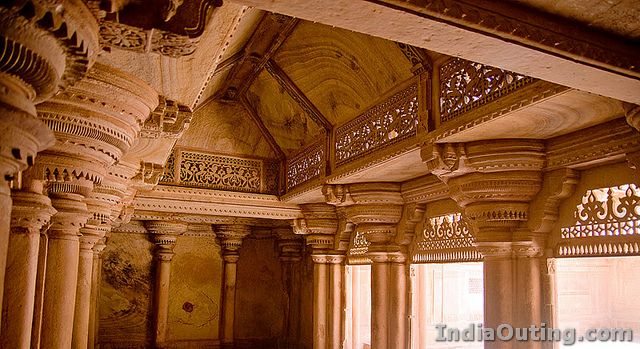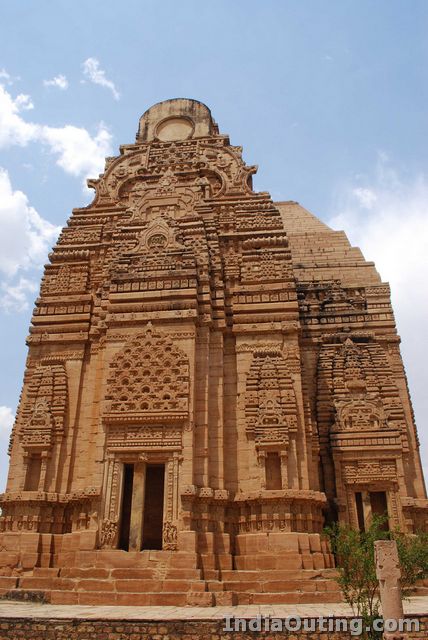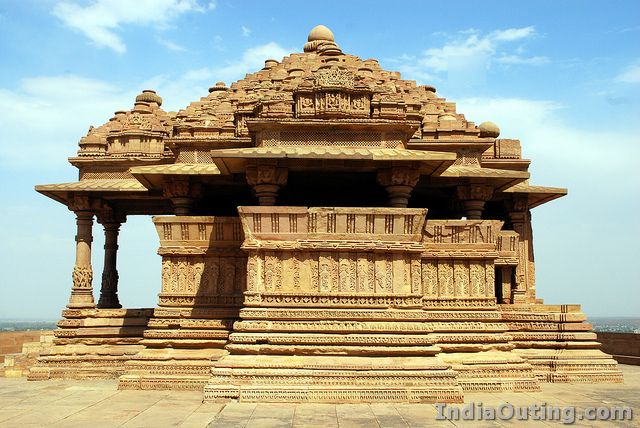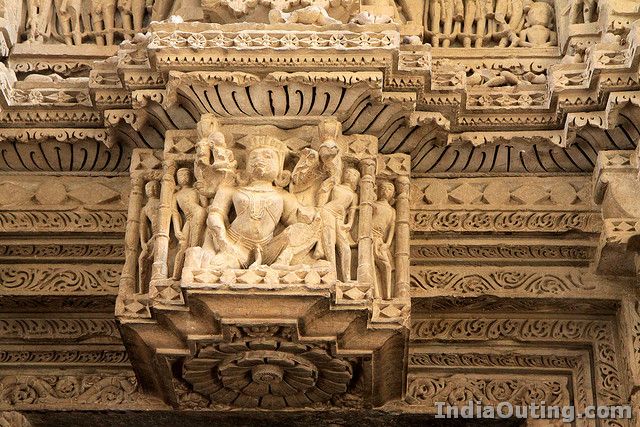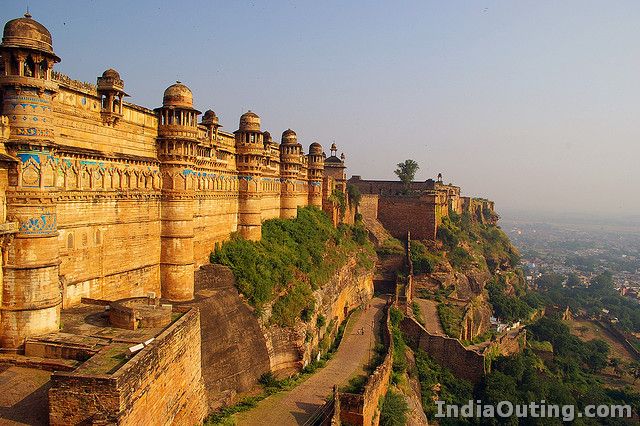Gwalior Fort
Described by Mughal Emperor Babur as, “The pearl amongst fortresses in India”, this imposing fort is hard to miss as it can be seen from every nook and corner of Gwalior. Built on an isolated hill of sandstone 100 m above the city, the Fort spreads out over an area of 3 km and is considered as North and Central India’s most impregnable fortress.
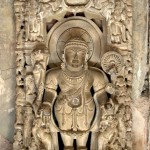
The Fort itself was built in two parts, at different times. The first part, the main Fort was built during the Tomar rule, in the 8th century. The Gurjari Mahal and the Man Mandir Palace was later constructed by Raja Man Singh Tomar in the 15th century for his favorite queen, Mrignayani.
